Fences
Fence placement along property boundaries is controlled under State Law. Some types of fencing may require Development Approval. To find out if your fence requires approval, please check at plan.sa.gov.au.
Fences between private property and Council land
Landowners may wish to erect new or, replace or repair existing fencing on the boundary of their property and Council property (e.g. a park, walkway, or council building). In accord with the Fences Act, Council must be informed of this in writing and given an opportunity to respond before any works are commenced.
Landowners are often curious to know if the Council will contribute to the cost of a shared fence. There are some conditions, under which residents may be eligible to receive a 50 per cent contribution from Council by way of reimbursement. (No contribution is available for commercial or industrial land.)
If the proposed works are consistent with the Council’s Fencing Cost Reimbursement Policy(PDF, 75.67 KB) , residents can:
- Serve a notice on the Council, setting out the proposed works and the contribution sought from Council (see Forms below).
- Include two written quotes for the proposed works.
After receiving this, Council will confirm whether the proposal is eligible for a financial reimbursement.
If the proposed works are not consistent with the policy, landowners may be able to proceed, albeit at their own expense.
Notice of intention to replace, repair or perform maintenance work on a fence form(PDF, 180.94 KB)
Notice of Intention to erect a fence form(PDF, 169.35 KB)
Cross notice against intended fence form(PDF, 196.69 KB)
Fencing Process Flowchart
If the proposed works are not consistent with the policy, landowners may be able to proceed, albeit at their own expense.
Fences between two private properties
If approval is not required from Council, boundary fencing becomes a civil matter between neighbours. This is governed by the Fences Act 1975, which sets out the duties and rights of landowners when considering fencing on shared boundaries. Answers to common questions on shared fencing are available from the Legal Services Commission of South Australia website.
Legal Services Commission of SA
Pool fences
PDI Act 2016 requires that backyard swimming pools include appropriate safety fencing. Approvals for pool fencing are issued by Council or a private certifier. The State Government's Pool and Spa Safety page has further details on the requirements.
Roaming dogs and secure fences
The Roaming Dogs and Secure Fences fact sheet contains information on ensuring that private property fencing is secured (to prevent roaming dogs).
Graffiti on fences
Where fences or building walls are subject to graffit, residents can report these incidents to Council, which can arrange to have the graffiti removed (subject to certain conditions). Incidents can be reported by visiting the Online Services link below.
